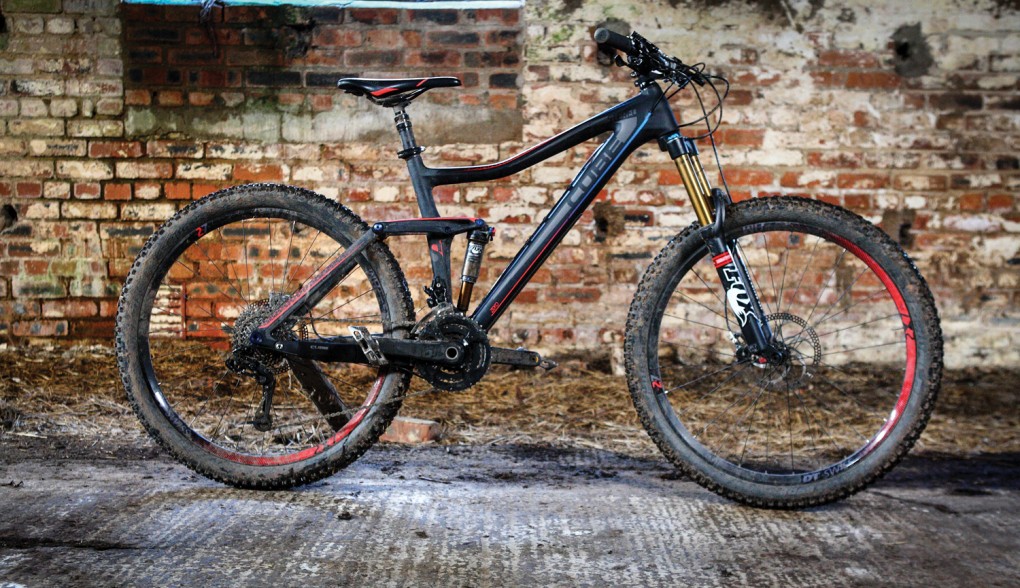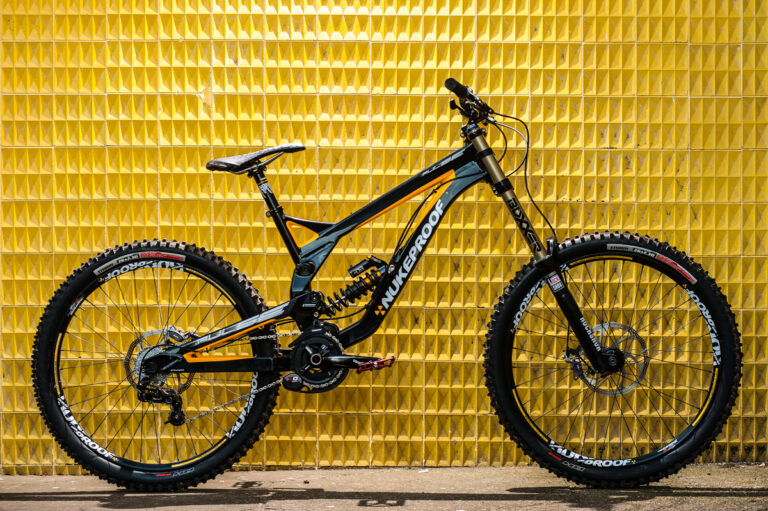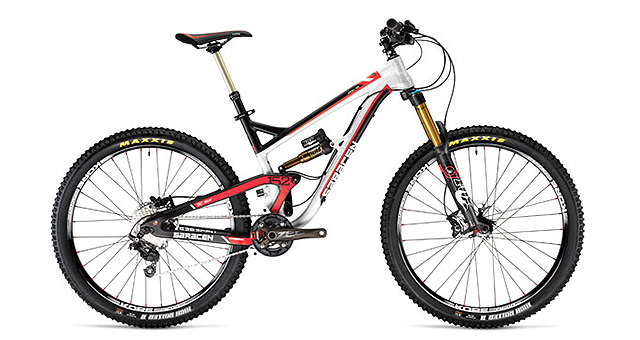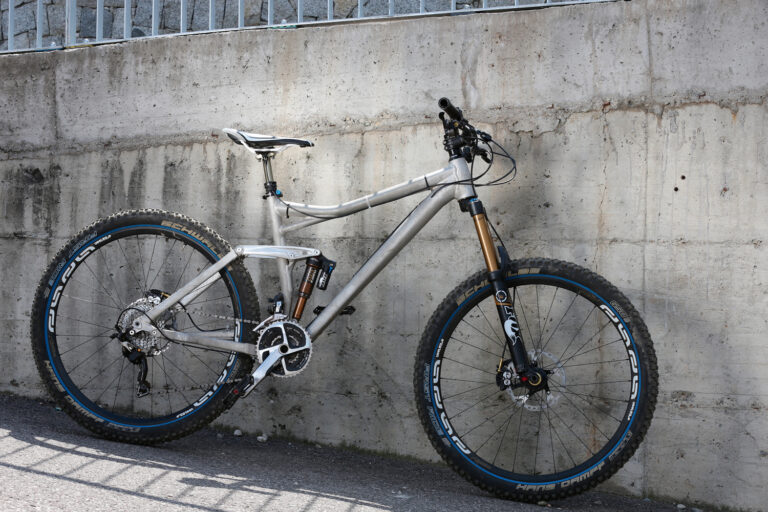
ROLLER COASTER
The past twelve months has seen a number of manufacturers get it right with alternative wheel sizing. Not so much a major innovation, simply that the mountainbike just got a little bit better. More traction, easier climbing, increased speed, better stability. To some the move to 29” wheels has not been welcomed, a perception of them being less fun, comments often made lean of experience.
DIRT ISSUE 130 – DECEMBER 2012
Words by Steve Jones. Photos by Steve Jones
It took me a while and considerable tweaking to ‘get it’. Looking back now it was a simple matter of timing and weight distribution. As a marker in time I now view trail bikes up to 140mm to be best suited to the 29” variety, they simply do all the ground work better – bikes such as the Yeti SB95 (130mm) Stumpjumper Evo (135mm) and Intense Tracer 29 (140mm).
We’ve proved that 29×140 is quicker than 26×160 nearly everywhere, still people remain unconvinced, and partly for good reason – wheel stiffness, tyre availability, feeling of speed. Ultimately if you want to feel fast go 26”, but if you want to go fast, go 29. Bigger wheels/less travel or more travel/smaller stronger wheels?
Having waited for a capable 160mm offering with bigger hoops all season without anything positive materializing the Cube appeared. There’s a real need for lightweight sub 30lb 160mm bikes when most manufactures can only offer 30lb plus tanks we’ve been riding for nearly ten years. The Stereo is timely in that it offers lightweight, good design AND faster 650B wheel sizing.
THE ONLY ONE?It’s often wrongly assumed that how hard you ride is determined by what bike you ride. Downhillers on eight inches push it harder than trail riders on five. This is more often than not untrue.
Contrary to that, many people argue that riding a rigid pushes you to the limit and gets you out of shape, putting you into predicaments that a downhill bike does not. Obviously, having seen first hand the degree of calculated and uncalculated risk taken by racers at World Cup level deems that argument untrue also. Ultimately it’s only you that can ride to whatever limit you decide.
The luddite war cry that echoes around the media and websites surrounding bigger wheels is that they are not as much fun. As it turns out many of these folk don’t turn out to be a bundle of laughs either. But before you think this is a 650 sermon it’s not. Big wheels don’t make a bike, the design does. Just as it took years to fine tune the 26 wheels, so the same applies to 650B. This test has to be read on the basis this is THE ONLY good 650 bike I have ridden so far this year.>>
CLICK THROUGH TO CONTINUE READING…

So what about it? Well it has all the component parts that make up many other mountainbike breeds. It has the usual points of pleasure and despair component wise – for example: great tyres, no ISCG mount, it has a certain take on damper and suspension characteristics, which I have to say are not perfect. For me, this time of year in heavier conditions, the bike’s suspension just needed more gutsiness, that would be amplified in harder terrain. At the moment, the rear damper is the weak link in a class act of great angles and low weight.
Anyone who tells you this bike is no fun is wrong. Because you are carrying more speed the ‘pick and place’ ride style is well suited simply because it enables you to aim further afield, on flat roots it carries more speed than 26 but not as much as 29, in really tough places it carries more speed than say 29×140 and has more muscle to brutalise the really hard sections. Overall it’s slower than a 29 as a trail bike, but in the tight it gives a fraction more time, a hint more manoeuvrability. Ha, well it feels that way!
Does it turn a mistake into an option? Yes it does. Get off track and the bigger wheels don’t get caught in the carnage as much, losing speed isn’t such an instantaneous affair as 26. It’s a long travel bike that can be ridden comfortably all day long yet the mindset is all about descending. The sales pitch from Cube in this respect is faultless, “an aggressive trail bike also suited for rides in Alpine areas.” It just needs that rear damper to be working on the same aggro’ frequency, more support please Cube.
It WILL make you faster down a hill, it WILL give you more support and balance, you CAN get things a bit more wrong, and ultimately you’ll probably look to ride bigger, harder sections. Your corners will realign themselves and become a different tempo, traction is improved. This IS a great bike.
This is very likely the lightest, fastest 160mm bike currently in production, and, apart from possibly the Intense Carbine (which I’ve yet to ride), I’m just wondering where the hell the opposition is?
| FRAME | Cube Stereo Super HPC 160 SL, carbon |
| FORK | Fox Evolution FIT 160 |
| REAR SHOCK | Fox |
| CRANKSET | Sram X0 carbon 44/33/22 175mm GXP press fit BB |
| FRONT DERAILLEUR | Sram X0 |
| REAR DERAILLEUR | Sram X0 |
| SHIFTERS | Sram X0 |
| CASSETTE | Sram 10 speed |
| CHAIN | Sram |
| WHEELS | DT CSW All Mountain 2.7 |
| TYRES | Schwalbe Hans Damf 2.35 |
| BRAKES | Formula The One |
| HANDLEBARS | Easton Haven carbon |
| STEM | Cube |
| GRIPS | Cube |
| SEAT | Fizik Gobi |
| SEATPOST | RockShox Reverb Stealth |
| SIZES | 16”, 18”. 20”, 22” |
| PRICE | £3999 |
Want more Cube bikes? Try these:
Cube Stereo Super HPC 160 SL | Bike Test






